Rope access, or industrial climbing, is an access system used to reach complex or challenging locations, typically at height or depth.
Rope access technicians utilize ropes and specialized equipment, in addition to climbing and rigging techniques, to safely execute various tasks: repair, maintenance, installation, inspection, testing and more.
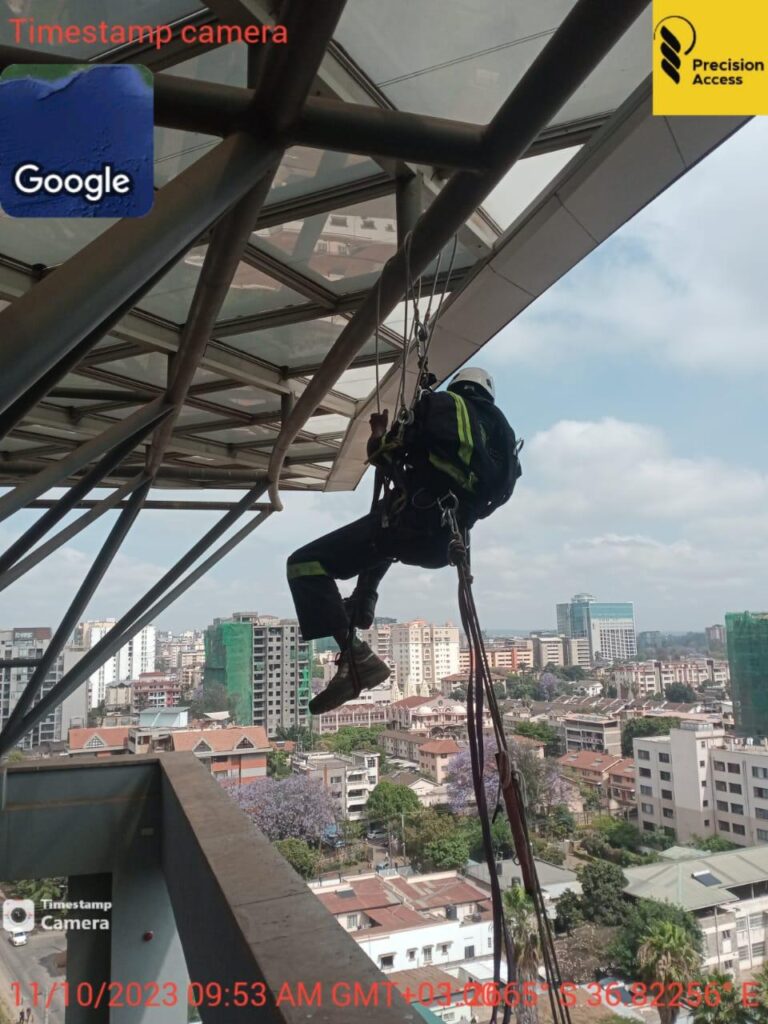
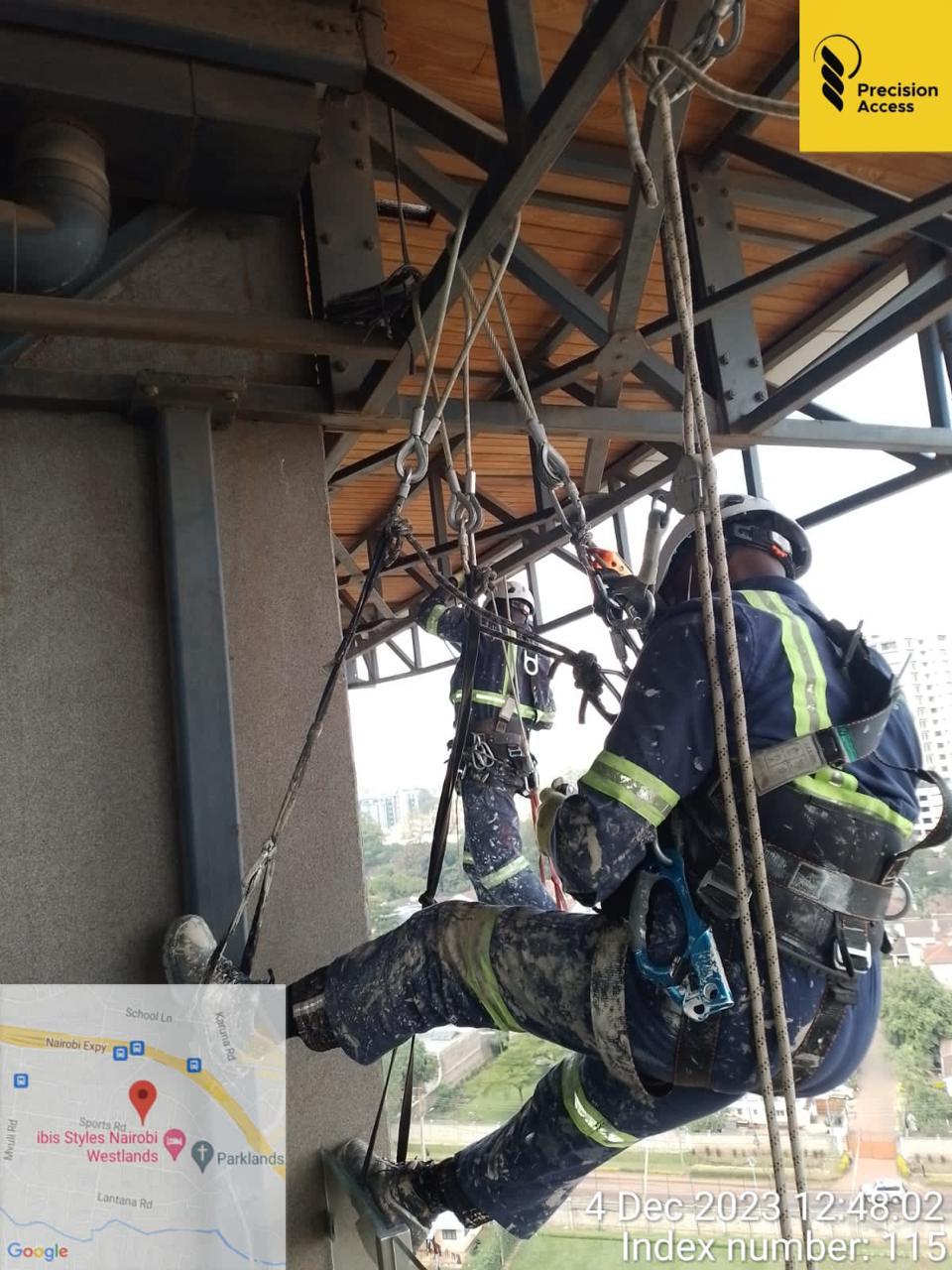
Rope access technicians undertake specialized training and adhere to strict safety protocols. Moreover, redundant safety systems, such as backup ropes, further mitigate potential risks.
Scaffolding, on the other hand, is unstable when stacked up, especially if not drilled into the building structure. Planks are often used to move between scaffolding structures without a fall arrest system present. Cradles, especially portable cradles with counterbalance systems, are unstable and have limited weight-bearing capacity. Moreover, there is no fall arrest system in most cradles.
Rope access allows multiple technicians to ‘drop’ down simultaneously and work side by side. There is no limit to how many rope access technicians can be deployed (as long as there are sufficient rigging points), so work can be executed much faster. Moreover, there is no setup time for rope access.
With cradles, only 2-3 people can sit in one bucket so the area covered in a ‘drop’ is very limited. Similarly, scaffolding has limits on how many people can work on a structure and the setup time is very long (scaffolding has to be stacked to the top and then work can start)
Rope access is extremely flexible. Technicians can execute various movements and manoeuvres to reach any part of complex structures or facades. For instance, if a structure has curvature, protrusions (e.g. protruding balconies), or indentures, rope access can overcome this and reach all the areas.
Scaffolding and cradles only work for a straight vertical line. The moment there is any complexity in a structure these systems fail to provide comprehensive access.
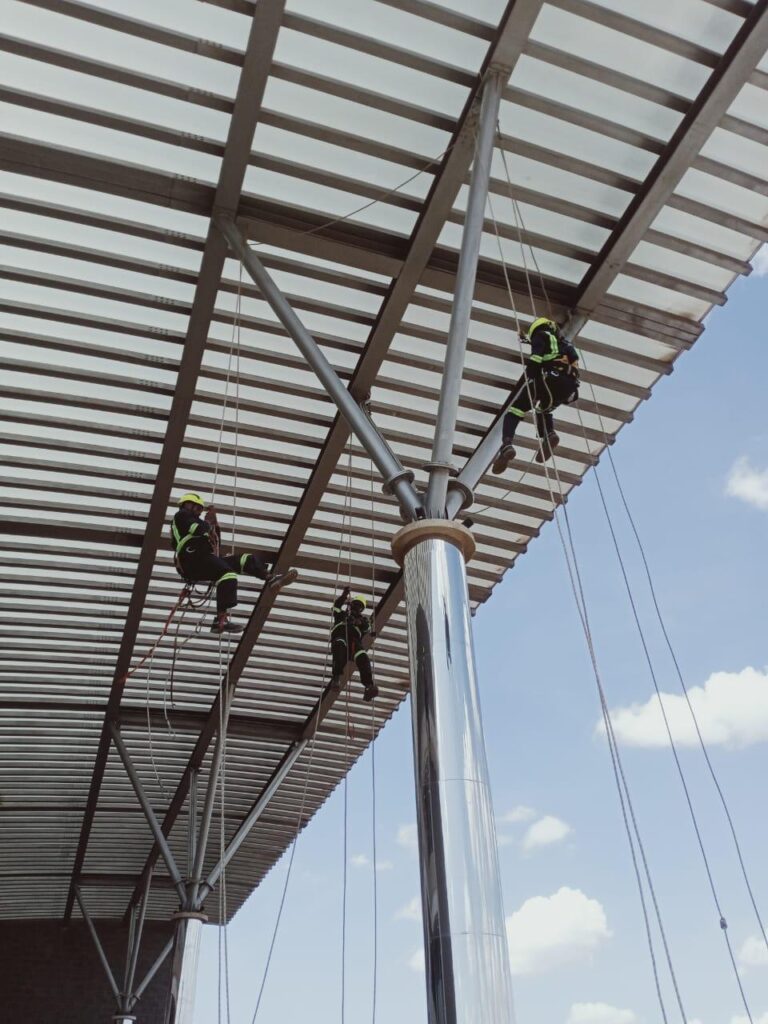
Rope access does not use any machines or heavy equipment. It therefore has very minimal space requirements, and there is no noise.
Scaffolding, on the other hand, is extremely disruptive in terms of taking up significant space for setup (especially problematic is malls and hotels), noise from drilling, blocking views, and generally being an inconvenience and eye sore.
Cradles take up large spaces on the rooftop and have long setup times. The permanent cradles, or cradle building maintenance units, require a track around the rooftop and are noisy.
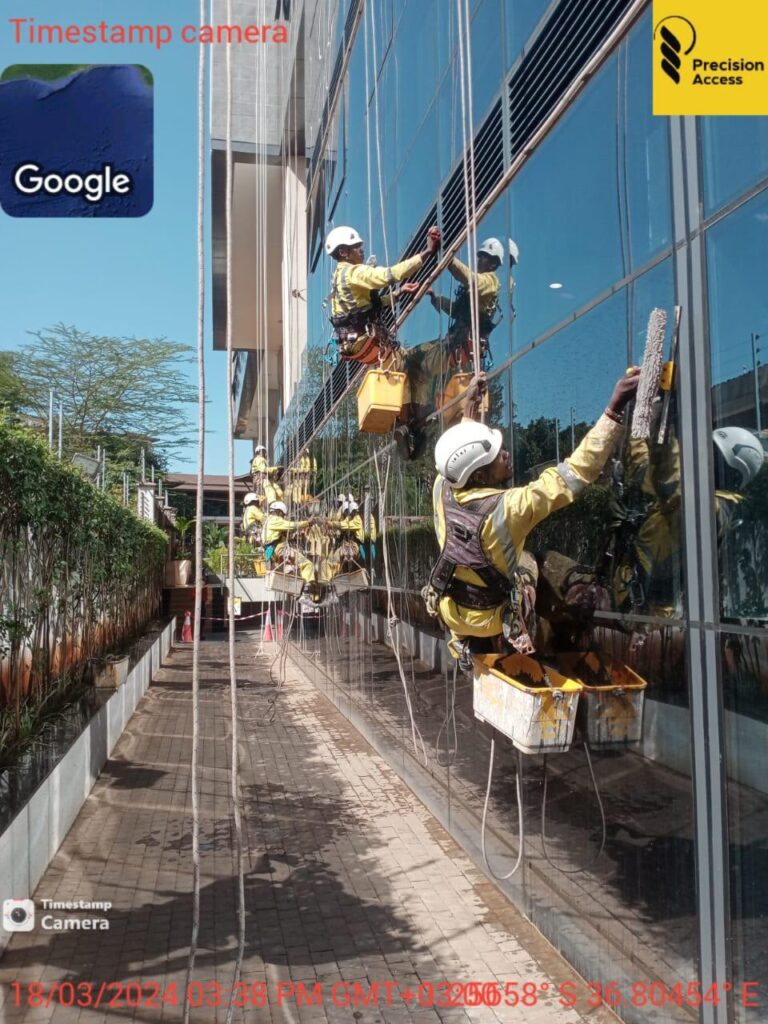
There is no requirement to rent machines or equipment with rope access. There is no recurring opex cost with rope access either. On the other hand, scaffolding and cradles must be rented for every job, whereas permanently installed cradles have a huge capex (tens of thousands of Dollars), and an opex cost from maintenance, safety inspections, and hiring a trained operator for each job.
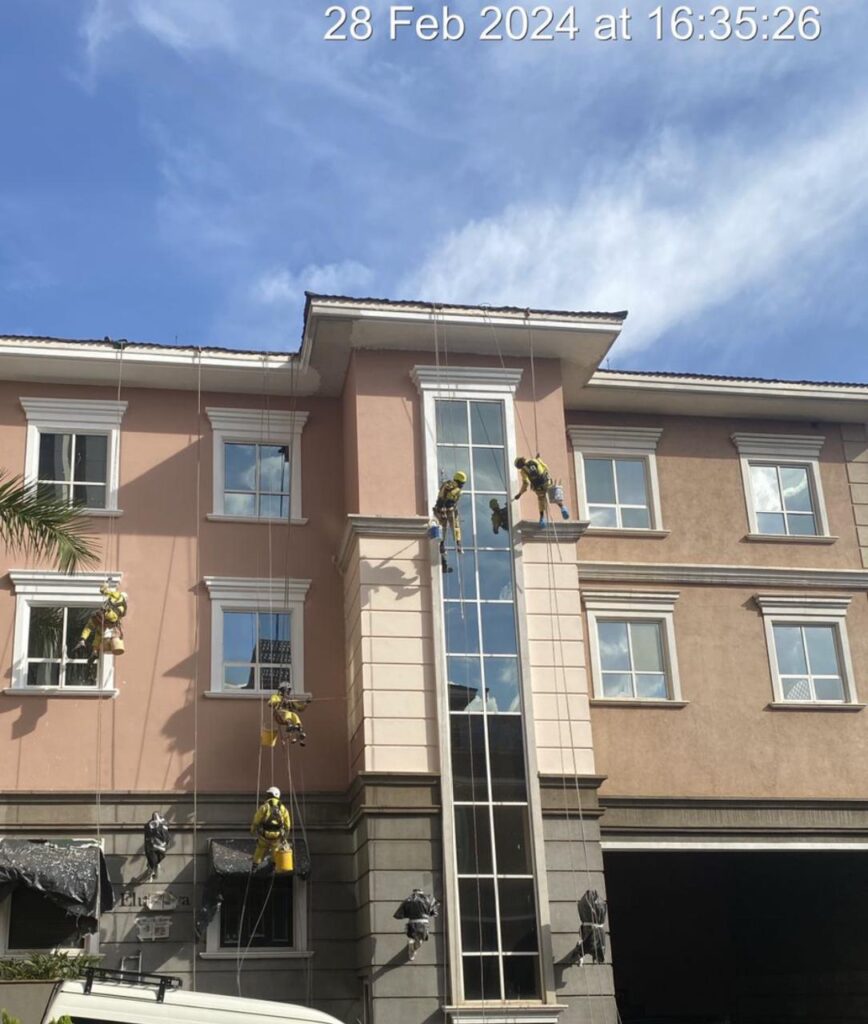
Once rigging points are established, rope access is cost effective to utilize as there is no requirement to rent machines or equipment. Scaffolding and cradles must be rented for each job (unless a permanent cradle is installed which is extremely expensive).
